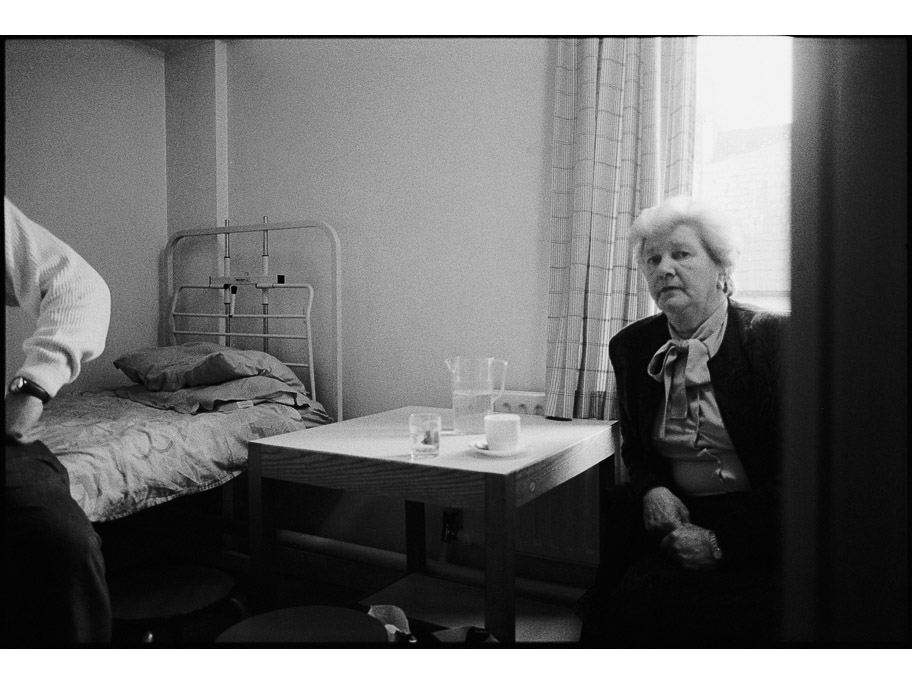251296251297
These are family photographs, shot on two consecutive Christmas days in a Dublin hospital. My eldest brother had been admitted because he had been disturbed by his schizophrenic delusions and was having trouble with his medication. On 25 12 96 we drove to the hospital as a family, my sister, mother and other brother. We were determined to be as normal as possible and brought presents to open whilst we had tea and coffee. I brought my camera, as I always take photographs on Christmas day documenting family occasions with a few snapshots. All was well until the notion of getting out that day was discussed and the conversation became tense. I quickly stopped taking photographs but towards the end of our visit my sister jumped in to create a family group moment and I took one more photograph of my two brothers and sister. We left soon after.
The following year my brother had been in hospital for more than a year but was due to come out as he was doing very well. He was in a much healthier state. In the meantime I had looked at the photographs from the previous Christmas and there was no denying the power of a few of the moments. I had not intended to capture anything more than a family occasion but the reflex in me took photographs of some intense moments between us all before I had stopped. On the 25 12 97 there was a markedly different atmosphere, it was more optimistic and I took more photographs. This time my young niece and brother in law joined us.
In 1999 I was asked about exhibiting at a hair salon with an exhibition space on Brick Lane and I chose these images because the journey through the two days would work very well in a salon where each person was stuck in a chair and could look at normal family photographs juxtaposed with intense moments reflected behind in the mirrors.
My feeling was that this was a universally uncomfortable day for many people and that the forced normality of playing happy families at Christmas was awkward. I called it ‘251296251297’ It was a deliberately understated title and there were no captions for the images. The viewer was led on a journey accross two days and what they thought they knew at first from the initial images was turned on its head perhaps begging a re-evaluation of what they thought they saw.
I’m waiting for an opportunity to to show the work again in an appropriate setting and with the passing of time to write more about the images and our experiences. My brother still struggles with his condition and it affects us all. I would hope that sharing the story might be helpful for others in a similar predicament.
London October 2014
